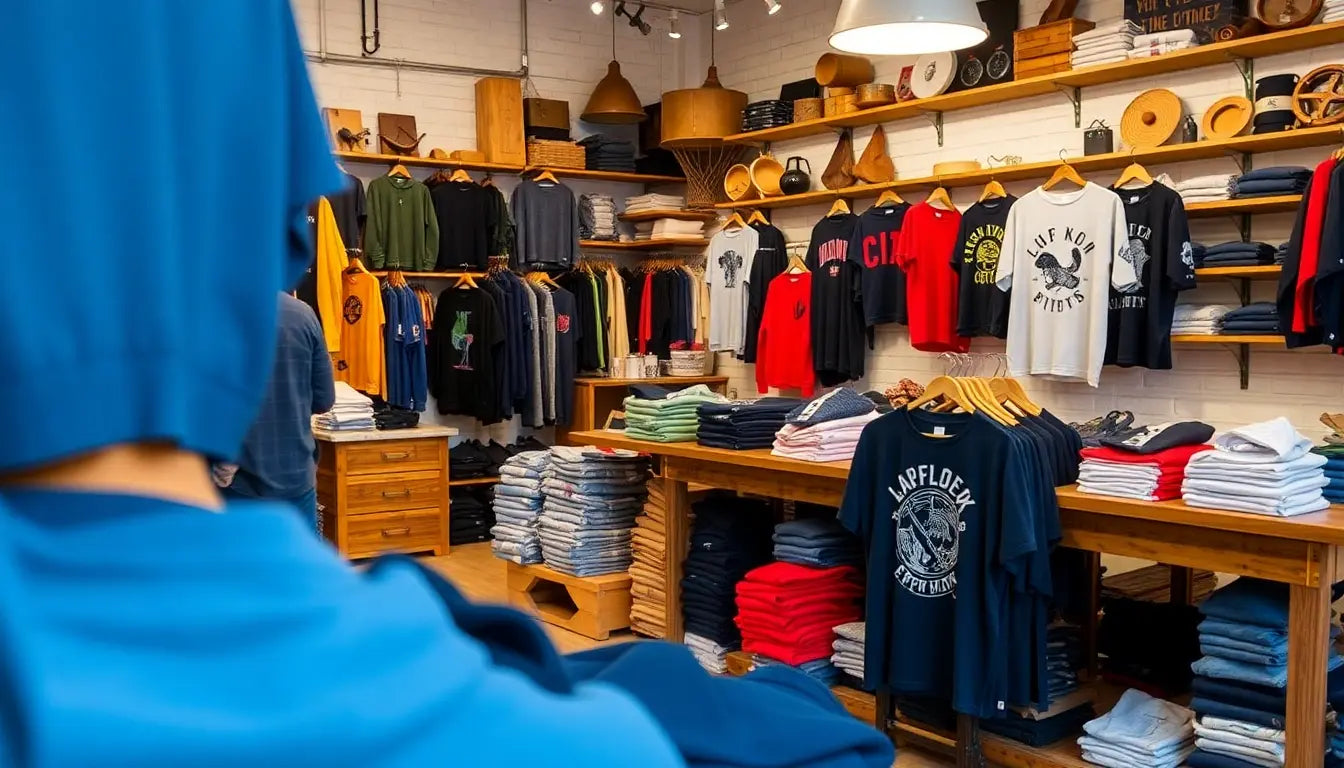
How Tommy Lee Sparta's Merch Funded a New Wave of Fashion Education and Small-Batch Makers in Jamaica
Introduction
When music and fashion converge, the result can be cultural expression and economic opportunity in equal measure. Over the last decade, artist-led merchandise evolved from simple concert shirts to thoughtfully designed drops, collaborations, and limited-run collections. In Jamaica, one of the most visible examples of merch-led influence is associated with Tommy Lee Sparta. Whether through direct reinvestment, strategic partnerships, or the demonstration effect of a high-profile artist prioritizing local production, Tommy Lee Sparta's merch story became a catalyst for a broader movement: expanded access to fashion education and a revival of small-batch makers who now serve both domestic and international markets.
Why this matters now
The creative economy is a growth sector for many Caribbean countries. As global interest in Caribbean music, culture, and fashion increases, so do the opportunities for local producers to capture more value. The key challenge has been turning cultural popularity into sustainable economic structures. Merch strategies that intentionally target local capacity-building help bridge that gap: they turn fleeting hype into durable skills, jobs, and microbusinesses.
Tommy Lee Sparta's brand: a context
Tommy Lee Sparta, known for his distinctive style within dancehall, has a brand that resonates strongly with fans. His visual language—logos, imagery, and apparel aesthetics—translates well into wearable products. That brand resonance is important because merch that sells easily can generate margins sufficient to fund downstream initiatives. The specifics of any artist's contributions differ, but Tommy Lee Sparta's merch functioned as a high-profile demonstration of how artist commerce can be a developmental tool.
How merch becomes funding: the financial logic
- High-margin limited drops: Limited editions and premium collaborations command higher unit prices, increasing the pool of funds available for reinvestment.
- Direct-to-consumer sales: Selling through owned channels reduces middleman costs and increases transparency for allocation of proceeds.
- Clear allocation strategy: When artists commit a defined percentage of merch revenue to community initiatives, the flow of funds becomes predictable and actionable.
Mechanisms of impact
Turning merch revenue into meaningful local outcomes requires deliberate mechanisms. The following are proven pathways that have been used in similar contexts and that influenced Jamaica's recent ecosystem changes.
- Microgrants and seed funding: Small grants for equipment, materials, and business registration enable micro-makers to scale from informal operations to legitimate microbusinesses.
- Sponsored curriculum development: Funding partnerships between artists and vocational schools help embed market-relevant modules such as pattern-making for streetwear, small-batch printing methods, and brand storytelling.
- Shared makerspaces: Investments in communal sewing rooms, print studios, and embellishment labs lower the capital barrier for individuals and small groups.
- Apprenticeship pipelines: Paid apprenticeships tied to merch production provide stable learning environments where trainees earn while they learn.
- Market access programs: Co-branded drops and pop-ups that feature student or small-maker work create launch platforms that otherwise would be difficult to access.
Design and production: where education meets practice
A critical element in turning merch into education is the integration of real production tasks into training. Instead of hypothetical projects, students and trainees work on actual pieces that will be sold. That alignment creates a feedback loop:
- Students learn to meet deadlines and quality standards because products will reach paying customers.
- Designers learn pricing and margin calculations when their work is part of revenue-generating drops.
- Makers gain experience estimating materials, managing short runs, and maintaining consistency across small batches.
Sample curriculum: a 12-week bootcamp for small-batch production
The following is an illustrative curriculum that has been used by artist-partnered programs to teach production-ready skills.
- Week 1: Brand storytelling and product-market fit; translating an artist's aesthetic into wearable products.
- Week 2: Sketching, technical flats, and basic pattern drafting for tees, hoodies, and caps.
- Week 3: Sourcing locally and sustainably—fabric selection and supplier negotiations.
- Week 4: Screen printing basics and transfer techniques for small runs.
- Week 5: Sewing techniques for streetwear—seams, hems, and finishes that scale.
- Week 6: Quality control and grading for short runs.
- Week 7: Costing, pricing, and margin management for limited drops.
- Week 8: Brand collaboration workshops—co-design with artists and brand managers.
- Week 9: Product photography, digital listings, and storytelling for e-commerce.
- Week 10: Fulfillment, packaging, and customer experience for premium drops.
- Week 11: Legal essentials—intellectual property, licensing, and basic contracts.
- Week 12: Launch week—students prepare a capsule collection for a live or digital drop.
Profiles of small-batch makers: typical trajectories
While names and identifying details vary, the common trajectory of makers supported through merch-driven initiatives often follows these stages:
- Starter: A home-based tailor or hobbyist who accepts local repair and modification jobs.
- Upgrader: Gains access to shared equipment and formal training; begins producing for local shops and artist drops.
- Microbrand founder: Launches a branded label leveraging skills, small-run capacity, and connections made through merch collaborations.
- Exporter: Scales quality and logistics to accept orders from international buyers or e-commerce platforms.
Supply chain changes: keeping value local
Historically, much of the design and production value in Caribbean music merch flowed to overseas manufacturers. By focusing on nearshoring and micro-production, merch-led initiatives shifted more value domestically:
- More orders for local fabric suppliers and small dye houses.
- Growth in domestic print and embellishment services.
- Development of packaging and fulfillment partners within Jamaica.
Marketing and storytelling: why visibility matters
Merch is both product and narrative. Successful artist-led drops that fund education use storytelling to highlight the makers and the social mission. Tactics include:
- Product hangtags or labels that share maker stories and the percentage of proceeds directed to training programs.
- Behind-the-scenes video content showing workshops, studio work, and maker profiles.
- Limited edition runs tied to milestones (anniversary drops where a fixed amount funds a scholarship cohort).
Sustainability and ethical production
As merch becomes an economic lever, it's also a vector to promote sustainable practices. Integrating sustainability into production and curriculum helps makers reach conscientious consumers:
- Teach upcycling and zero-waste pattern-making during workshops.
- Encourage use of certified or reclaimed materials for capsule collections.
- Train makers on transparent labeling to communicate material origins and care instructions to buyers.
Technology's role: digital tools for small-batch success
Technology amplifies small-batch makers' reach and efficiency. Key tech interventions include:
- Affordable design software and pattern-making tools for rapid prototyping.
- Online marketplaces and direct-to-consumer storefronts optimized for limited drops.
- Inventory and order-management apps scaled for micro-producers.
- Payment platforms that support microgrants, scholarships, and transparent allocation of proceeds.
Measuring impact: what success looks like
Programs that turn merch revenue into development should track a mix of economic and social indicators:
- Economic: number of microbusinesses launched; revenue growth of supported makers; volume of local production retained.
- Educational: number of graduates from bootcamps; certifications awarded; apprenticeship placements.
- Social: demographic reach (youth, women, underserved communities); jobs created; community satisfaction and perceived benefit.
Governance and transparency
To avoid greenwashing or tokenism, artist-led funding models need clear governance:
- Define the percentage of merch revenue allocated to community programs and publish annual reports.
- Establish advisory boards that include educators, maker representatives, and community leaders.
- Use third-party audits or partner with local NGOs to validate impact claims.
Policy levers that accelerate impact
Government and development agencies can multiply the effectiveness of artist-driven initiatives by creating enabling conditions:
- Support for makerspaces through grants or tax incentives for equipment purchases.
- Procurement programs that prioritize local producers for cultural events and state functions.
- Small-business support services—legal aid, export assistance, and digital marketing training targeted to creative microbusinesses.
Common challenges and mitigation strategies
No model is without obstacles. Typical challenges and responses include:
- Challenge: Irregular revenue from drops makes long-term funding uncertain. Mitigation: Create a reserve fund or match merch allocations with grant funding to smooth flows.
- Challenge: Quality control at scale for small producers. Mitigation: Invest in training modules focused on consistency and provide shared QC resources.
- Challenge: Risk of token collaborations that don’t create real capacity. Mitigation: Require measurable commitments—hours of training, number of makers employed, or pieces produced locally—as part of every collaboration.
Replication toolkit: a step-by-step guide
For artists, cultural organizations, or municipalities that want to replicate the model, here are practical steps:
- Commit: Set aside a clear percentage of merch profits for local development and publicize the commitment.
- Partner: Identify vocational schools, makerspaces, and small factories to co-design programs.
- Design: Create market-aligned curricula and production plans that integrate student work into live drops.
- Fund: Use microgrants to equip makers and seed new microbrands, and establish an emergency reserve fund for production continuity.
- Market: Tell the story of the makers and the social mission—use limited runs to create urgency and visibility.
- Measure: Track and publish impact metrics yearly; use findings to refine next program cycles.
Illustrative scenarios: small, medium, and large-scale models
Different artists and regions will apply the model at different scales. Here are three scenarios:
- Small-scale: An artist commits 5% of each merch drop to microgrants; result: 20–30 makers receive one-off grants and several 4-week workshops are funded annually.
- Medium-scale: A label partners with a vocational school to co-produce seasonal capsule collections; result: ongoing apprenticeships and a shared production studio with basic equipment.
- Large-scale: An artist brand creates a foundation funded by merch proceeds, providing scholarships, operating a full makerspace, and partnering with export agencies to access foreign buyers.
Long-term outlook: durable creative economies
When executed well, merch-funded initiatives contribute to more than temporary employment. They create pathways: makers become brand owners, vocational students secure steady incomes, and the country retains more creative value. Over time, the ecosystem matures—suppliers expand, standards improve, and export-ready microbrands emerge. For Jamaica, the combined cultural capital and improving infrastructure offer a credible route to a more diversified creative export economy.
Key recommendations for stakeholders
To maximize impact, stakeholders should prioritize these actions:
- Artists: Treat merch as impact capital—plan recurring allocations, share stories, and insist on local production where feasible.
- Educators: Align curricula with market realities: hands-on production, small-run business skills, and digital commerce.
- Makers: Invest time in quality systems, digital presence, and niche positioning that leverages limited editions.
- Policymakers: Provide infrastructure support and streamline business registration and export processes for microbrands.
Conclusion
The story of Tommy Lee Sparta's merch serves as both inspiration and practical template. When artist brands consciously allocate commercial proceeds to local capacity-building, the benefits ripple outward: better-trained designers, resilient small-batch makers, more local production, and stronger cultural exports. The model is not a silver bullet, but with governance, transparency, and strategic partnerships it can be a durable engine for creative-sector development in Jamaica and similar contexts.
Further considerations
- Focus on inclusivity: ensure programs reach women, youth, and marginalized communities.
- Plan for continuity: build multi-year commitments rather than one-off donations.
- Scale responsibly: let microbusinesses grow at sustainable rates to preserve artisanal value.
Call to action
Artists, educators, and policymakers who want to explore this model should begin by convening a local roundtable: bring together artists' teams, vocational schools, maker representatives, and small business support organizations to co-create a pilot program. Start small, measure carefully, and design for scale. The early returns will be economic, cultural, and social—and they will help ensure that Jamaica's creativity is matched by local ownership and skill.



